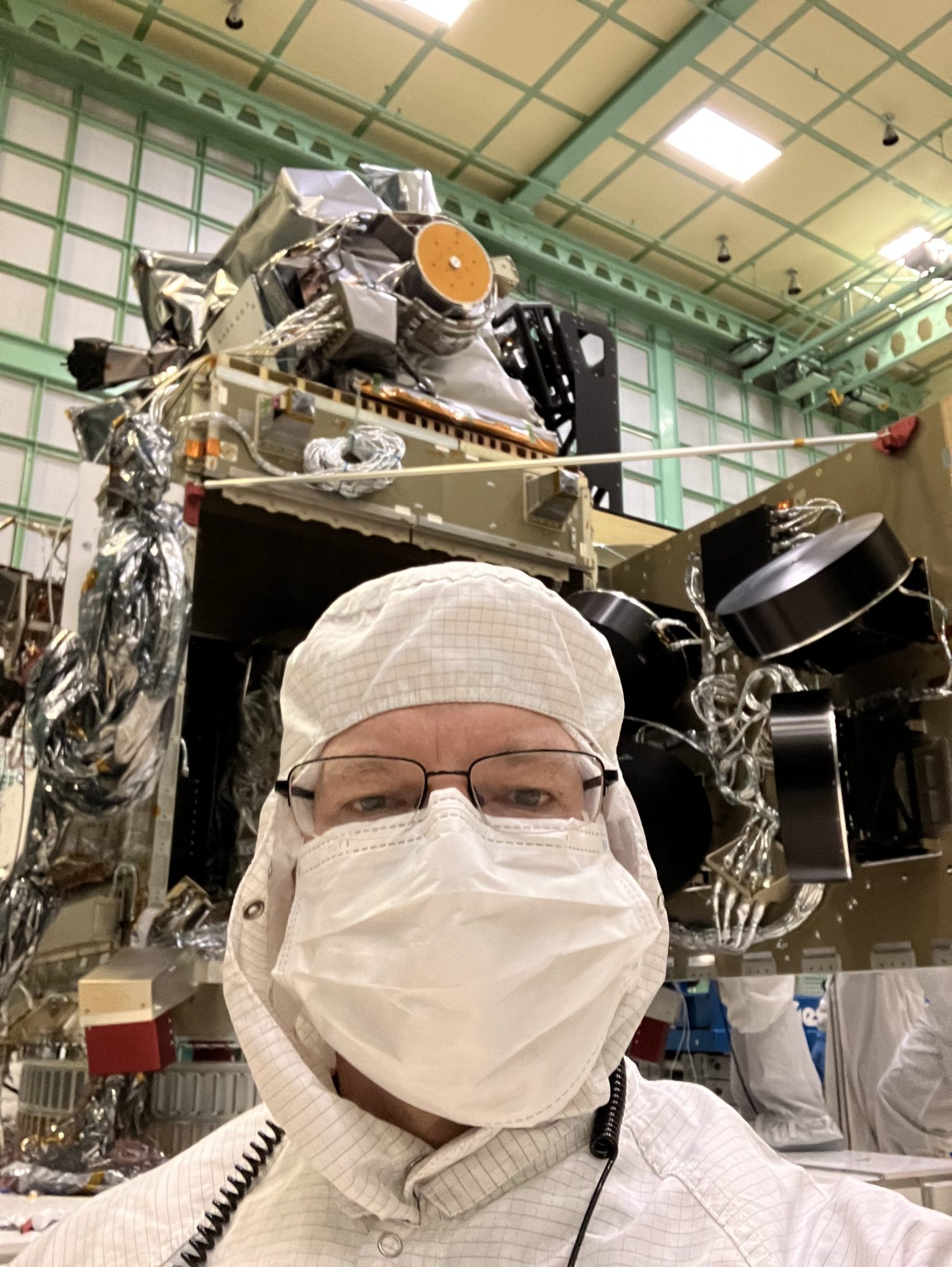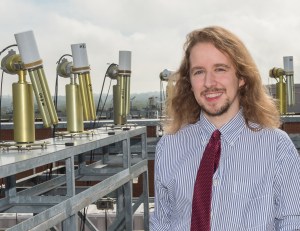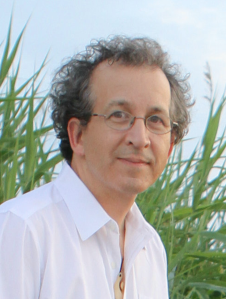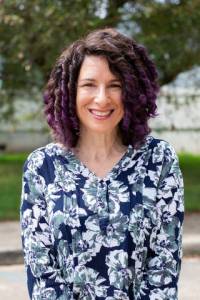Creative Gary Davis has a blast as Mission Systems Engineer for PACE and playing loud brass instruments. He recently combined the two.
Name: Gary Davis
Title: Mission Systems Engineer; Plankton, Aerosol, Cloud, ocean Ecosystem (PACE)
Formal Job Classification: Aerospace engineer
Organization: Systems Engineering, Science Directorate (Code 599)
What do you do and what is most interesting about your role here at Goddard? How do you help support Goddard’s mission?
Most of what I do is communicate among the different technical groups of the mission to make sure everyone is playing on the same page of music. What is most interesting about my job is that I get to see what all the other groups are doing and learn a little bit about their different disciplines.
Why did you become an engineer?
When I was young, I always took things apart and usually was able to get them back together. I wanted to see how things worked. My parents did not stop me, which was good.
What is your educational background?
I have a B.S. in aerospace engineering from the University of Virginia. I have a master’s in mechanical and aerospace engineering from Princeton.
What brought you to Goddard?
I came to Goddard in 1994. My wife (girlfriend at the time) got a job in Washington, D.C. I mailed my résumé to Goddard and called the director of engineering. That led to my first job here.
What are some of your career highlights?
I initially worked on TRMM, the Tropical Rainfall Measuring Mission. I worked in propulsion, and this was Goddard’s first in-house propulsion system. It was very fun. We got to see the launch in Japan to because we loaded propellant into the satellite at the launch site in Tanegashima. It was a wonderful first mission. It was a blast.
My next mission was WMAP, the Wilkinson Microwave Anisotropy Probe. I was the subsystem lead for propulsion. This was an astrophysics mission looking at the cosmic microwave background from the big bang, so it was very interesting and fun.
I then worked on the Solar Dynamics Observatory, SDO, as the propulsion lead. This was the largest propulsion system Goddard had yet made so it was challenging.
After the 2003 shuttle Columbia accident, I briefly worked with the Space Shuttle Program looking at recurring problems.
I then was the overall spacecraft engineer for MMS. the Magnetospheric MultiScale mission, four spacecraft launched at the same time. They still fly in formation. This is when I started doing systems engineering.
Shortly after, I went to OSIRIS-REx as part of the systems engineering team.
In 2017, I became the mission systems engineer for PACE.
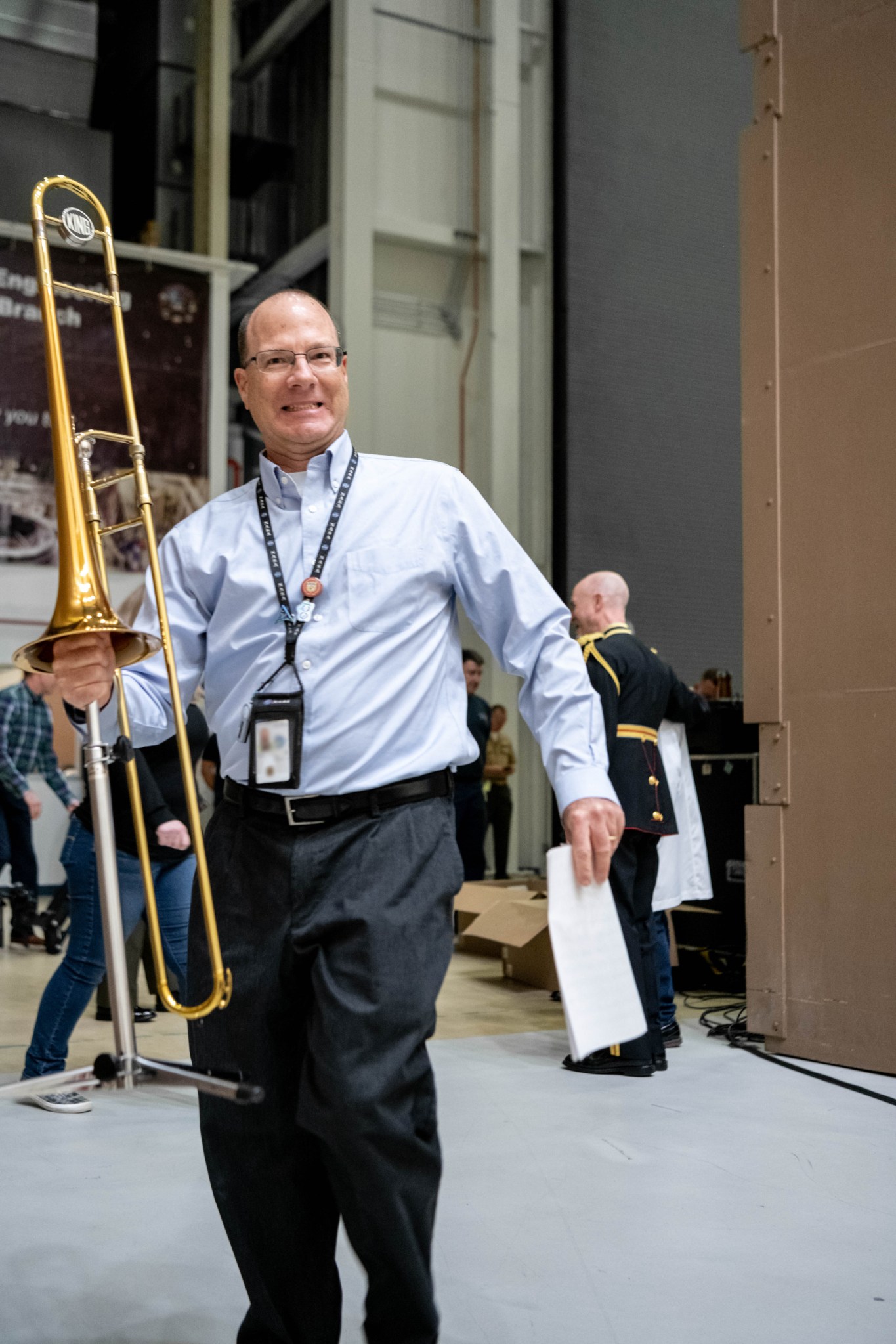
What excites you about PACE?
Before I worked on PACE I knew nothing about plankton. It is amazing how much we depend on plankton. Every other breath we take is dependent on plankton. Plankton makes half the world’s oxygen. They are also the base of the ocean’s food web. The health of plankton really affects the health of the entire ocean and the Earth.
PACE is so special because our instrument can look at all the colors of the ocean, from infrared to ultraviolet and everywhere in between. As our scientists say, with the prior instruments we had an “eight-pack” of crayons’ worth of ocean color. PACE is giving us the “128-pack” of crayons, so we now have every possible color. Some of the light that comes out of the ocean shows plankton, but it is a small amount. We will be able to not only tell that plankton is in the ocean, but identify the species of plankton. Each species has different colors. Some planktons are good for the ocean, but others are bad.
PACE is scheduled to launch in January 2024. We are just a few months from launch, and things are getting really busy.
What is challenging about working on mission that can last over a decade?
One challenge is just the sheer amount of information that stacks up over time.
Another challenge is personnel changes. As new people come onto the project with great new ideas, we need to ensure we also train those people to know years’ worth of the mission’s development.
Documenting the reasons why we do something is another big challenge. If, for example, something must be 5 volts, we have to explain the reason why. The better a job we do explaining the reasons for something, the easier it is for new people down the road to follow our footsteps.
For PACE, we are trying to do a state-of-the-art instrument that is as good technically as we can do with the technology we have. We are pushing the envelope of technology to enable better science with a finite amount of resources. We constantly balance performance, risk, cost, robustness, schedule, and personnel.
As an unofficial mentor, what advice do you give?
The main thing is to listen because there are so many people here who have so much experience, are so bright, and know a lot more than you about a lot of other things. Even if you are a leader, you need to get as much knowledge from others who know the details. The best way to do that is to listen to what they have to say.
How does our engineering mentality turn problems and glitches into strengths?
We build one-of-a-kind, unique things. Part of the game is you run into problems. We run into problems and glitches all the time. This is a good thing. I want to see problems on the ground so we can solve them before they occur in orbit.
Whenever we have a problem, the engineering mentality here is so strong that we get all these great ideas about how to fix the problem. At the end of the day, you fix the problem and have a better, stronger system. Some people get frustrated when a test fails on the ground, but secretly inside I am happy because that gives us the chance to fix the problem and make it better and increase the chances of surviving in orbit.
Another of Goddard’s strengths is that we have great test facilities. We have a good culture of engineers who are really good at testing, troubleshooting, and fixing things. It’s in our Goddard DNA.
What do you tell a student who wants to become an engineer or scientist?
First, they should keep being curious about and asking questions about whatever they are interested in or want to learn about that gives them energy.
Second, do not take that extra math or science class because you are already strong in math and science. Instead, learn about people as much as you can. Any big project in science or engineering requires a team. The better you understand and can work with people as a team, the better career you will have.
Who is your engineering hero?
Colin Chapman, who was a British racecar designer who revolutionized many Formula One racecar designs. He was a visionary who died about 20 years ago. His philosophy was one of simplicity and light weight. Everything we do also has to be simple and light weight.
What do you do for fun?
I play trombone in the Environmental Protection Agency’s Starlight Orchestra swing band. We have several concerts a year around the area. When we are lucky, people dance.
Once a year I play double bell euphonium at Tuba Christmas at the Kennedy Center for the Performing Arts in Washington. We play Christmas carols – really loudly. It is the one time I get to play the melody, not the bass lines.
For PACE, we did an acoustics test of the spacecraft where we put the spacecraft in the acoustics space chamber and blasted it with sound to make sure it can survive the environment inside the rocket’s nosecone when it launches. All the engine vibrations and outside dynamics make the rocket’s nosecone a very loud environment. At some point, loud noises create vibrations. Large, lightweight surface areas such as solar panels can be impacted.
Since I’m a loud brass player, I always wondered how loud I could play compared to the giant speakers in the acoustics chamber. Then I wondered if a group of brass players could play as loud at the giant speakers. One thing led to another, and I wondered who the most powerful players could be. I contacted the U.S. Marine Band and asked if they might want to work on a joint engagement event. We could educate people about acoustics testing and have fun at the same time. They agreed to bring 30 musicians to make some noise. It was great.
The Marine Corps Band wrote a special fanfare for us, and played in the chamber and even gave Goddard a mini-concert of space and ocean themed songs. It was wonderful.
After almost 30 years, what still makes Goddard fun?
Frequently I have great fun. Learning is fun.
Goddard is collegial. I get to work with so many technical groups of bright, wonderful people. Engineers, scientists, and everyone else all offer something amazing to learn.
In addition to your work, what is important to you?
I have a lovely wife and two grown children. They keep me busy. I love hearing about their lives.
What one word best describes you?
Creative.
A former boss gave me a rock with “creative” written on it in Sharpie. I still have that rock. I look at that rock a lot. It reminds me that if I cannot think of a solution to a problem, the team will have a better solution than I could think up.
By Elizabeth M. Jarrell
NASA’s Goddard Space Flight Center, Greenbelt, Md.
Conversations With Goddard is a collection of Q&A profiles highlighting the breadth and depth of NASA’s Goddard Space Flight Center’s talented and diverse workforce. The Conversations have been published twice a month on average since May 2011. Read past editions on Goddard’s “Our People” webpage.


























